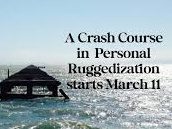by Yuval Noah Harari in The Guardian… Forget Hollywood depictions of gun-toting robots running wild in the streets – the reality of artificial intelligence is far more dangerous, warns the historian and author in an exclusive extract from his new book
Apple Intelligence is coming. Here’s what it means for your iPhone
by Kate O’Flaherty in The Guardian…Apple is about to launch a ChatGPT-powered version of Siri as part of a suite of AI features in iOS 18. Will this change the way you use your phone – and how does it affect your privacy?
WHO leader and Wuhan Institute of Virology collaborator clashed in ‘ugly’ meeting
by Emily Kopp in US Right to Know…Tedros told the lawmakers then that “understanding the origin of COVID is a scientific and moral obligation, and it requires China to cooperate, share data, access and information fully and urgently,” the WHO said.
Global Displacement Forecast 2024
Danish Refugee Council writes in Global Displacement Forecast 2024…The fighting that has torn across Sudan since 15 April 2023 has turned the country into one of the
world’s largest displacement and protection crises, and one of the most dangerous environments for
humanitarians to operate in. The stage has been set for a long war.
Chartbook 310 The shock of the new: Dollar dominance and modern monetary macro in the 1920s. (Hegemony note 5)
by Adam Tooze in Chartbook…The denaturing of the gold standard and the emergence of the new field of monetary macroeconomics combined to pose the question of global financial leadership in a way it had never been posed before, compounding the shock of discovering that the United States was the obvious answer to that question of leadership. Basic questions of monetary governance would never again have the feeling of stark novelty they had at that moment.
Eric Schmidt’s AI prophecy: The next two years will shock you
by Azeem Azhar in Exponential View…While he doesn’t say it explicitly, it seems that Eric expects the next two years to be faster and more turbulent than the previous two.
We now have a chance to stop the most deadly infectious disease — if we act
by Atwal Gawande in The New York Times…In a place with one of the highest TB rates on Earth, I saw that the disease could be stopped with the new tools available. And still more are coming. Clinical trials of five TB vaccines with promising early results are now underway. After decades without major advances, we now have a steady stream of innovations. But they won’t matter unless the world commits to deploying them.
Selling American bombs
by Tim Barker and Dylan Saba in Phenomenal world.com…An interview with Sarah Harrison on the mechanics of US foreign military sales
W.H.O. declares global emergency over new Mpox outbreak
by Apoorva Mandavilli in The New York Times….The epidemic is concentrated in the Democratic Republic of Congo, but the virus has now appeared in a dozen other African countries.
A global foresight report on planetary health and human wellbeing
by UNEP in Navigating New Horizons…As the leading global authority on the environment, the United Nations Environment Programme
(UNEP) plays a critical role in keeping the environment under review and finding solutions that inspire,
inform and enable nations and peoples to improve their quality of life without compromising that of future generations.



